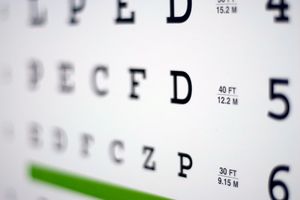It's safe to say that everyone has come across the expressions 20/20 vision and visual acuity. But what do these terms truly mean? Having a proper understanding of them will enlighten you as to how your eye care professional evaluates your eyes during your eye exam.
The term 20/20 vision actually refers to the accuracy of eyesight from 20 feet away. If you've been told you have 20/20 vision, that means that from twenty feet away you can clearly see what is normally seen from that distance. 20/20 vision is really just a standard measurement. Many people can even see better than 20/20; for example, vision that measures 20/15, so what they could see at 20 feet, a person with normal vision might only be able to discriminate from 15 feet.
Both eyes are examined one after another. During the part when you're asked to read the letters on the eye chart aloud, the smallest letters you can clearly see determine the visual acuity of the eye that's being examined.
But 20/20 eyesight doesn't necessarily mean that your eyesight is totally free of flaws, because it only indicates how sharply you see at a distance. Other crucial sight skills; being able to focus on objects that are close by, contrast sensitivity, peripheral awareness, eye coordination, depth perception and color vision - these also contribute to your overall vision. And actually, a patient with 20/20 vision may have plenty of other eye-related health problems. People with damage to the retina as a result of glaucoma, diabetes, high blood pressure, or a range of other diseases might still have 20/20 vision, without the help of glasses. For this reason, your eye care professional always conducts a comprehensive eye exam, rather than just a regular eye chart test.
So the next time you book yourself in for a comprehensive eye exam, you'll know what we're testing for when we ask you to read aloud from an eye chart!


